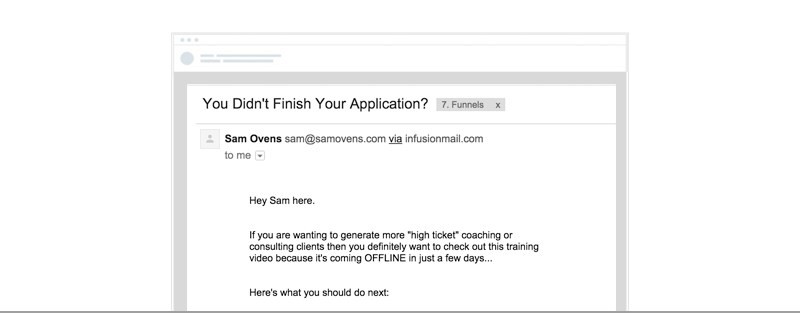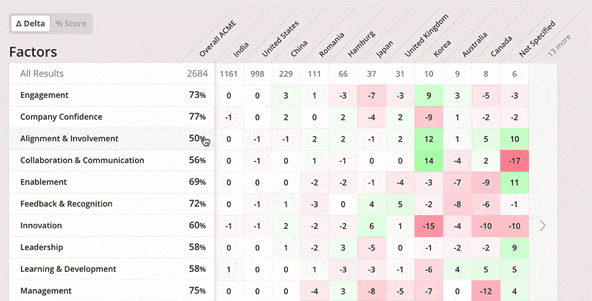
Despite marketing’s high return, it’s highly time-consuming. Finding prospects, reaching out, following up, and other outbound take time and effort.
But marketing automation tools can handle these jobs for you. This lets you scale your marketing far beyond what you could do otherwise.
So in this article, you’ll learn what marketing automation is, its benefits, and how to use it. You’ll also see several key examples of it in action.
What You’ll Learn:
- What is Marketing Automation?
- When Should You Use Marketing Automation?
- How to Incorporate Marketing Automation
- Examples of Marketing Automation
- Best Practices for Digital Marketing Automation
What is Marketing Automation?
Marketing automation is outsourcing time-consuming promotional tasks to dedicated software. This saves marketers from spending hours manually pursuing and converting leads.
Digital marketing automation software integrates with CRM and outreach software to personalize and simplify outreach. The most popular tools are Hubspot (37% of businesses using automation), Salesforce (24%), Mailchimp (19%), and Sendgrid (9%).

Their hands-free responses, scheduled messages, and other automations greatly enhance productivity. That’s why 53% of companies use marketing automation platforms.
The Pros and Cons of Marketing Automation
Pros
Higher Efficiency Between Marketing and Sales Departments
Marketing automation processes let you scale far beyond what your firm could do by hand.
You can automate prospecting, outreach, social posting, and other marketing tasks. This allows your business far greater reach than it could otherwise.
In turn, you’ll make far more sales because of your expanded presence.
Constant Feedback Means Constant Improvement
As your automation platform performs its daily tasks, it is continually analyzing every piece of engagement, sale, or information along the way.
It can keep track of what is working, what is not, and who is buying it. This means you can continually adjust your marketing strategies based on that information and improve as you go, without having to manually evaluate each customer touchpoint or interaction.
Do More at Once
The whole point of automation is to save you time and money by doing things that are typically tedious (but necessary) marketing activities, such as sending out thank you emails or reminders about upcoming events.
But unlike you, automation software can interact with multiple clients about separate ideas on various channels – all at the same time. While your software goes to work on these tasks, you can do other more human activities.
Cons
Costly
As with any valuable business tool, the purchase price or cost for monthly use can be quite large.
But beyond that, we should always measure its real value according to your ROI. If you aren’t making enough back by using it, it may not be worth your time or your money.
Lots of Information is Needed
Firstly, Automation only works if you have leads to build on.
Far too often, marketers buy into automation, thinking it will generate new leads for them without having any other strategies in play. As a result, they have this excellent automation system, which often is rather costly, and no leads to use it on.
Thus, many start buying lists of email addresses to use instead of generating their own leads. But this only serves to agitate the problem further, as most of these email addresses have never heard of, let alone feigned interest in their brand or products.
This tactic produces unsolicited emails to people who are literally wasting their time and money, as well as contributing to lower engagement, email deliverability rates, ROI, and a less than admirable reputation.
Secondly, you need to have lots of information about your potential and current consumers. If you don’t have enough or your data is incorrect, then the system sending out automated messages has a high likelihood of sending out the wrong or generic information, which can be irritating to clients.
Lack of Personalization
Marketing tools are smart, but they can’t fully replace humans. Personalization is crucial in cold outreach since you must tailor your email to each person.
There’s a limit to how much automated tools can personalize your outreach before it sounds fake. When each prospect has a different background and goal, filling their name and company into a template only goes so far.
The solution is never to send outreach without human review. When your tool fills in the prospect’s information into your template, customize the message according to their unique situation.
When Should You Use Marketing Automation?
You may think a process that will save you time and money is a no-brainer. And sometimes, that’s true.
Marketing automation, however, is not one of those, and there are definitely some things you should already be an expert on before automation comes into play.
Before considering automation, make sure you have a steady and consistent flow of inbound leads. As I mentioned above, automation without a strategy to get new and organic leads will get you nowhere.
Second, remember that while automation will help scale your efforts, it doesn’t do the actual marketing for you.
You need to have a marketing and sales team in place that knows how to nurture your leads and move them through the sales stages and buying process. Marketing automation will build on that.
Another thing to consider is tracking and analytics. Automation can do this for you, but you need to have a thorough understanding of the analytics that matter most to your business before you “set it and forget it.”
How to Incorporate Marketing Automation
As with many marketing and/or business strategies, you have to start somewhere, and usually that is using what you already have and slowly building on that. It’s no different for marketing automation.
The entire process needs to be uniquely yours. Automation is not a one-size-fits-all tool. And merely buying software for your business will not make it succeed. So you need to know exactly what your goals for automation are.
Do you need help with identifying the hottest leads, building email marketing campaigns, and tracking your prospects? Or are you more focused on renewals, targeting buyers at every step, and identifying new growth areas?
Then look at how other businesses in your industry are using automation. Find out what works, and what doesn’t.
Include both your marketing and sales team throughout the entire process. Figure out their needs, how they would use this technology, and how to make it more efficient.
Also, take a look at your sales goals, your current and expected ROI, and the metrics used by your C-suite to gauge those.
Then you can look for an automation platform that will meet all of your needs and help you grow as only you can.
After you find one, it’s all about plugging it into all your media channels, contact list, CRM, and analytics to being implementing ideas that will help grow your business in the way you need.
Examples of Marketing Automation in Action
35% of marketers say email is their top marketing channel this year. And 95% of marketers say email marketing meets their business goals.
So if you want to automate your marketing, email is a good place to start. It’s also easy to do, thanks to the wide range of email tools available.
Email marketing companies automate for big returns in revenue, leads, and more. Those automations include:
Welcome Emails
A welcome email greets new subscribers to your email list. They have a 30% open rate, much higher than most campaigns.
It’s a great opportunity to…
- Confirm a subscription
- Tell readers what to expect
- Push readers through the sales funnel
- Tell a story
- Get social media followers
You can also say “thanks” and offer a discount…

…offer a free guide

…or just tell your story.


Abandoned Cart
When someone adds products to their cart and leaves the site without buying, abandoned cart emails appear in their inbox. They prompt them to complete their purchase, possibly offering a discount as an incentive.
Whisky Loot’s message is a masterclass in copywriting. They tell you why their subscription’s valuable, and exactly what’s in it.

Customer Survey Emails
Survey emails ask people to complete surveys, usually while offering an incentive. This gets crucial customer feedback while engaging the customers who complete the survey.
Below, Miro offers $50 gift cards to customers participating in an interview:
Cold Prospect Outreach
Directly contacting prospects is extremely rewarding, but time-consuming too. By managing and filling out templates, marketing automation can reduce a lot of work.
That’s what Hunter.io does. Marketers add prospects to a lead database, and Hunter automatically fills their outreach templates with their information.

Product Launch
Email automation is a great way to announce a new product. Since everyone subscribed to you is already a fan, you’ve already done half the selling.
It’s just a matter of presenting your product effectively as Canyon does below:

Marketing Automation for Social Media
Intelligently automating your social activity makes your outreach much easier. It enables you to produce more content at a higher quality since you’re not spending half your time doing menial stuff.
Here are some examples of social automation in action:
Post Scheduling
Post scheduling lets you plan your content in advance, eliminating the stress of day-to-day posting. You can schedule all your posts months in advance using tools like SEMRush.

Instead of thinking of what to post every day, you can create a long-term strategy for your social outreach.
Automate Messaging Across Platforms
Using tools like Hootsuite, you can automatically send messages across all your social channels. For example, MindValley automatically DMs promotions to its followers when prompted.

Provide Customer Service
People are increasingly using social media to complain about brands. When companies don’t respond to these complaints, they go unresolved, resulting in their loss to competitors.
But brands like Domino’s Pizza don’t let that happen. Whenever customers complain about issues with their orders, Domino’s promptly responds.

Use marketing automation to regulate customer service
You probably don’t have the same resources as Domino’s, but you can make up for it with automated tools. Messaging software can respond to complaints based on negative keywords (ex. “burnt,” “hated,” etc.).
Track Engagement and Notify Users When a Post Goes Live
Marketing automation software can also integrate with your CRM or RSS to track activity and campaigns, no matter where the engagement is coming from.
And when you post a new blog on your site, the software can send out a tweet or message on your social media platforms to let interested clients know.

Use marketing automation to notify users when a post goes live
However, just as with email marketing, not everything on your social media platforms should be fully automated. After all, these are people you’re interacting with, not robots.
Therefore, you need to sound and appear like a human who cares for them. Giving your audience generic messages or ones that don’t necessarily apply to them makes you look spammy and will give your brand a bad reputation.
Some social media platforms, such as Facebook, already have some automation built-in. Facebook allows you to track customer behavior and engagement with your brand so that you can select and critique your audience to get the attention of just the right demographic.
And as always, be sure to use your social media channels to retarget those who have been to your site before and may not have engaged the way you would like them to.
Lead Generation
Landing Pages and Forms
Automated tools take most of the grunt work out of landing page creation. For instance, Carrd lets you create conversion-ready pages with just a few pieces of personal information.

Their pages include collection forms, which you can seamlessly integrate with your CRM. This process is much faster than creating and configuring a landing page from scratch.
Monitor Visitor Activity
Optimizing your site means understanding how visitors use it. For example, if people leave your site because it’s slow to load, you need to speed it up.
Use tools like Google analytics to understand exactly how visitors behave on your site.

You can get even more details by using visitor record software, like Hotjar. These display a visitor’s journey as if you were looking over their shoulder.

Messenger Windows and Popups
Another great example of automation on your landing page is a messenger window or small pop-up that allows visitors to contact you directly, such as the one below.

Use marketing automation to run welcome messages and pop-ups
Answer Customer Inquiries
While it can be used for promos, as in the case above, the software can also be programmed to offer answers to common questions or problems they may have with your products or website through a tech bot.
Of course, there are always times when customers would rather speak with a real person, so make sure, like the example above, that you give them a phone number or link to schedule a call with them.
You can also offer the ability to live chat with a technician or support specialist, like the example below.

Use marketing automation to live chat with customers
Automatic Form Fills
As you automate different forms for online visitors to fill out, you’ll notice that less than half of those people actually complete the form. To avoid this, get their name and email address right upfront. That way, you can send them automated reminders later to finish the form.
To increase the likelihood of them completing any form or registration, allow certain fields to fill in automatically. Studies show that the shorter the form and less work a client has to put into it, the more likely they are to complete it.
However, it’s vital you maintain relevance and quality control when using automation for landing pages and forms. And as always, follow landing page best practices.
Marketing Automation: Analytics
One of the best features of automation is its ability to track and monitor your leads, engagement, and conversions. Some digital marketing automation tools exist explicitly for this, while others incorporate other automated processes.
Measure Ad Campaign Effectiveness
Tools like IFTT and Zapier, for example, can track leads from your Facebook ads. When a person subscribes or clicks on your ad, all of their contact info is automatically collected and stored.
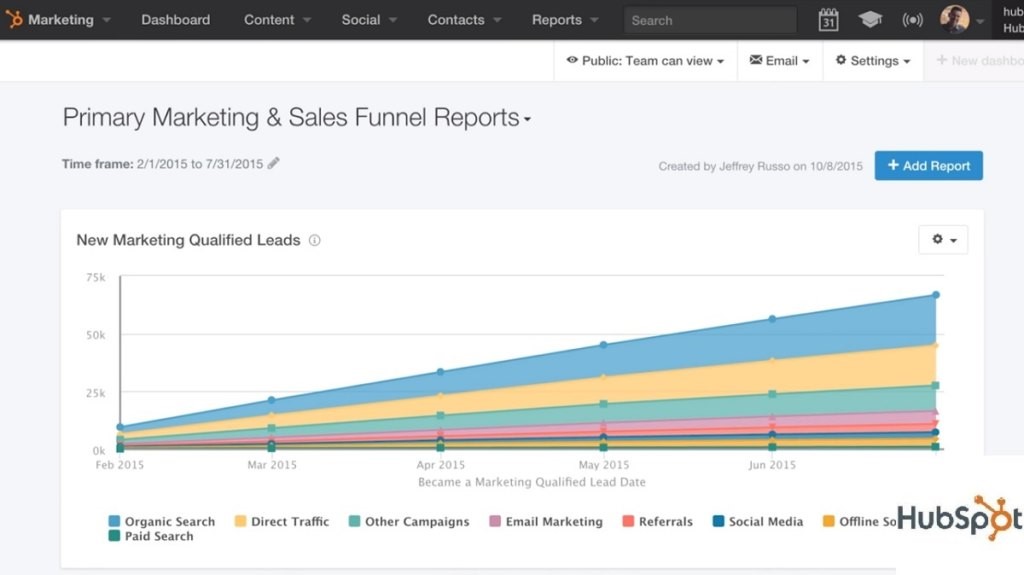
Use marketing automation to measure ad effectiveness
By keeping track of this info and what ad it’s attached to, you can tell which ads were the most effective and which target audience they applied to the most. You can then use this to improve upon advertisements or keywords that maybe didn’t work so well.
Some automation platforms also allow you to input weekly, monthly, and even annual goals your company would like to achieve so you can gauge how close you are to meeting them.

Use marketing automation to track goals
Run A/B Tests
As you pay attention to this info, you can begin to run A/B tests on your different channels using automation software, which will evaluate how to improve certain aspects of your campaign to get the maximum amount of engagement.
Take this simple example from OnSwitch, for example, which is testing out the effectiveness of emojis. Just remember to only run one A/B test at a time.
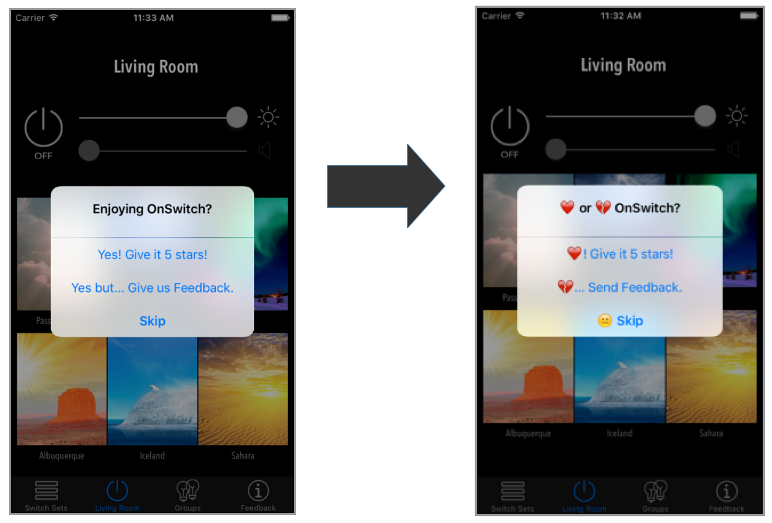
Use marketing automation to run A/B tests
Monitor Competitor Performance
Another thing these marketing automation tools can do is compare your brand and its engagement to that of your competitors.
Instead of scanning each competitor’s websites and the news regularly, these systems can keep track of what they’re doing for you. This allows you to see what keywords they’re using that work, as well as which ones don’t.
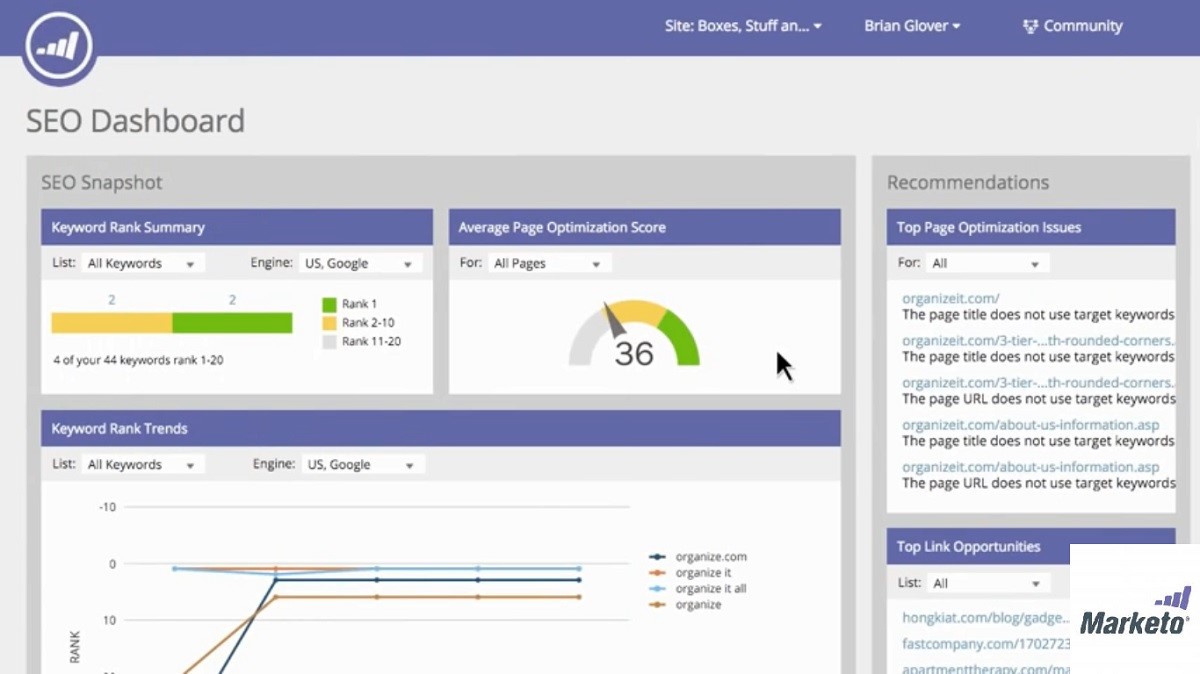
Use marketing automation to monitor competitor performance
Manage Employee Efficiency
Some automation tools track what projects specific employees are working on, letting you know just how productive each is and how you can increase their efficiency.
Sales
Sales automation software automates many repetitive tasks essential to moving customers down the sales funnel. In the context of marketing, sales tools work with marketing software to make each part of lead gen and conversion easier.
Sales automation makes outbound much easier in several ways.
Prospecting
Imagine you’re searching for prospects on LinkedIn. Instead of finding and evaluating profiles by hand, you can use Sales Navigator to create custom filters and narrow down eligible prospects much faster.

Sales Navigator can also notify you when new prospects appear automatically. This supplies your firm with high-quality leads without you doing anything.
Email Outreach
Your email outreach shouldn’t vary too much since your template is the culmination of lots of testing. Sales automation tools can automatically fill your templates with prospects’ personal information.
This means no writing dozens of emails by hand or copy-pasting them into your email client.
Sales Calls
Studying your sales calls is crucial for improving your conversion rates. Sales tools can transcribe your calls and provide insights into your performance.
Lead Scoring
With lead scoring software, you’ll know which prospects are most qualified from demographic and behavioral data. Tools like Clearbit automatically score leads based on the information they enter into forms.
Digital Marketing Automation: Content
Content automation tools reduce human involvement in content creation. While creating effective content is always hard work, you can outsource some of it to dedicated software.
Copywriting
AI writing software like Jasper, automatically creates quality content based on a user prompt.

While their output still requires human review, these tools can speed up the writing process. You can create email copy, blog posts, and other content instantly.
Social Media
Creating and managing social media content is time-consuming. But by using social tools like Tailwind, you can automate much of the process.

Social tools help you design posts, schedule them, and respond to user interactions. Analytics functions help you optimize your campaigns too.
Editing or Proofreading
Your marketing content is worthless if it’s riddled with typos. Readers see grammar errors as unprofessional and think less of brands with sloppy writing.
Proofreading tools like Grammarly and ProWritingAid ensure your content is publish-ready as you write it. Beyond just checking for spelling mistakes, they also evaluate against the audience you’re targeting.

For instance, if your writing is too complex for a general audience, it will offer tips for simplifying it. Proofreading makes your content more effective and are as essential to marketing as anything else.
PPC
PPC or pay-per-click automation involves using software to manage and optimize your ads. These automation tools let you automate research, bidding, and more to improve conversions—all while saving money.
With PPC automation, marketers use machine learning to manage ad campaigns instead of spending hours updating keywords, schedules, and demographics. For example, you can use automation to update your bids based on current prices.
Best Practices for Digital Marketing Automation
Here’s how to use marketing automation most effectively:

Set Clear Goals
It’s important to have direction behind your automation strategy. Otherwise, you have no standard to measure your performance against.
Examples of automation goals include:
- Increase quality of leads
- Pinpoint conversion channels
- Reduce marketing costs
- Increase overall efficiency
If you have a clear goal for your automation, you know what to focus on. For example, if your cold email outreach is too time-consuming, use outreach tools like Hunter.
Optimize Ad Creation
Creating advertisements manually is not only difficult but less effective than using automated tools.
Ad platforms use vast amounts of information to help optimize your campaigns. Instead of just guessing, you can make data-driven decisions on copy, scheduling, and more.
They also let you manage ads across different platforms, so you don’t need to navigate between each manually.
Leverage Multi-Channel Automation
Email is the most common medium of marketing automation. But ignoring other channels—such as SMS and social—leaves money on the table.
Automation tools make it easy to contact consumers across every channel. For instance, you can announce a product via email and announce a sale via SMS a few days later.
Constantly Optimize Performance
Marketing automation isn’t a one-and-done process. The process involves constantly monitoring performance and making small adjustments.
While it may seem to defeat the purpose of automating, optimization is part of the process. No marketing tool will completely automate your marketing efforts.
Instead, they’re meant to make marketing more efficient. For instance, the Hunter dashboard shows exactly how your automated emails perform.

Effective Automation Saves Time and Money
The more you automate your marketing, the more you can focus on what matters. Routine tasks like qualifying leads and posting social content are easy to outsource to automated tools.
Start by identifying your most difficult marketing tasks. Then, find tools to optimize those activities and add them to your workflow.
With automation, you’ll spend less time on mundane tasks and earn more money thanks to the increased efficiency. While some automation tools can be expensive, they pay for themselves many times over.

